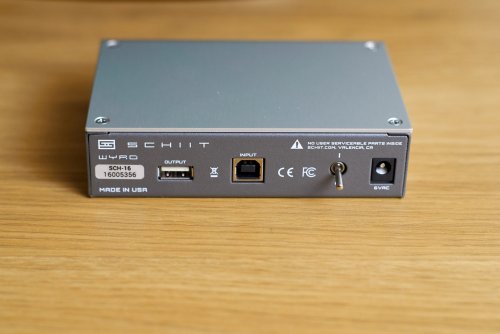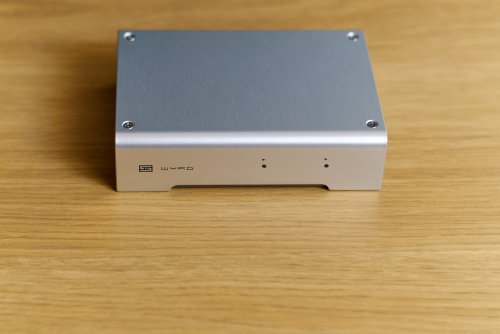General Information
USB Power Isolator
So, what the heck is this little thing? Well, it's either the world's most expensive and limited USB hub, or it's the key to eliminating sticky USB audio problems. Simply put, it cleans up your USB connection, eliminating noise and glitches caused by crappy USB power or USB port power management.
The Cure for Noise and Glitches
Have you ever heard strange noise from your USB DAC? Or have you had it "drop out" after the computer goes to sleep? Or does your computer have trouble recognizing your DAC at all? It could be due to noisy USB power, or USB port power management (very common with Windows 8 and Mac Mavericks.)
Improves Sound, Color Printing, Data Stability
Just kidding. This is silly. That's like saying charging your iPhone off Wyrd makes the battery last longer. But some listeners say Wyrd improves the sound of their system. We're not going to make any such claims. Nor are we going to recommend it for printers, external USB drives, or iPhone chargers.
Works With Any USB DAC
Wyrd isn't limited to working with Schiit products. You can use it with any USB DAC-2.0, 1.0, 32/384, whatever-it doesn't care. All it's doing is cleaning up the USB connection, and it supports all USB Audio Standards.
Made in USA
By "Made in USA," we mean Made in USA. Not "we just put in the last screw and said, 'Assembled in USA.'" The vast majority of the total production cost of Wyrd-chassis, boards, assembly, etc-goes to USA companies manufacturing in the USA.
2-Year Warranty
Wyrd is covered by a limited warranty that covers parts and labor for 2 years.
So, what the heck is this little thing? Well, it's either the world's most expensive and limited USB hub, or it's the key to eliminating sticky USB audio problems. Simply put, it cleans up your USB connection, eliminating noise and glitches caused by crappy USB power or USB port power management.
The Cure for Noise and Glitches
Have you ever heard strange noise from your USB DAC? Or have you had it "drop out" after the computer goes to sleep? Or does your computer have trouble recognizing your DAC at all? It could be due to noisy USB power, or USB port power management (very common with Windows 8 and Mac Mavericks.)
Improves Sound, Color Printing, Data Stability
Just kidding. This is silly. That's like saying charging your iPhone off Wyrd makes the battery last longer. But some listeners say Wyrd improves the sound of their system. We're not going to make any such claims. Nor are we going to recommend it for printers, external USB drives, or iPhone chargers.
Works With Any USB DAC
Wyrd isn't limited to working with Schiit products. You can use it with any USB DAC-2.0, 1.0, 32/384, whatever-it doesn't care. All it's doing is cleaning up the USB connection, and it supports all USB Audio Standards.
Made in USA
By "Made in USA," we mean Made in USA. Not "we just put in the last screw and said, 'Assembled in USA.'" The vast majority of the total production cost of Wyrd-chassis, boards, assembly, etc-goes to USA companies manufacturing in the USA.
2-Year Warranty
Wyrd is covered by a limited warranty that covers parts and labor for 2 years.






Curious if chord mojo will get benefit from using it too.
In same way: PC -> Wyrd -> Mojo